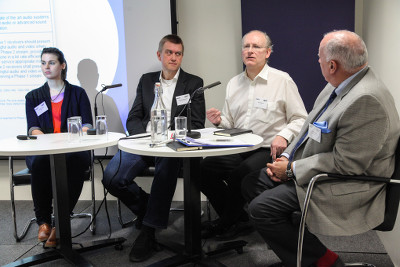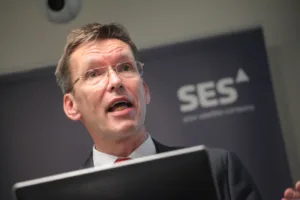Thomas Wrede, VP of Reception Systems at satellite operator, SES (pictured), said at a conference on UltraHD held in London during ISE, that he would like to see UltraHD resolution detached from HDR as a next step in broadcasting. While he acknowledged the importance and benefits of other image enhancements such as high dynamic range (HDR) and higher frame rates (HFR), he said that there is a danger that waiting for the standards to emerge to cover all the topics might delay things too long.
At the same event, the BBC’s Richard Salmon said that production costs for public service broadcasters (PSBs) in UltraHD were just too high – citing lenses at $30,000 to $40,000. He also pointed out that a typical camera lifetime was around eight years and many HD cameras have not been around that long yet.
Richard Lindsay-Davies of the UK’s DTG group said that “plugfests” conducted on sets with HEVC showed that a number from last year’s models (as many as 60%) didn’t support HEVC at all and 10% of the sets supporting only 25Hz or 30Hz operation. However, he acknowledged that 2015 sets tested do support UltraHD at 50Hz/60Hz, using HEVC. The DTG plans further tests to check HDCP 2.2 operation across sets and also other system components.
Sony’s content group said that it has around 170 titles now in UltraHD and Atlantic Productions said it had been working in the format for three years.
Analyst Comment
The view from Richard Salmon was not that different from the comments made by him in the past at the introduction of HD. Partly it reflects the view of PSBs which typically have to deliver a very wide range of content to a large audience at a relatively fixed budget. The PayTV operators, such as SES customers like Sky, on the other hand, depend on maintaining revenues and continuing to develop and innovate and stay ahead of PSBs. So SES wants to move quickly, PSBs such as the BBC would rather move more slowly to get the widest acceptance. (BR)
 SES UltraHD Panel – Yvonne Thomas (EBU), Stefan Heimbecher (Sky), Richard Salmon (BBC) and moderator, Chris Forrester
SES UltraHD Panel – Yvonne Thomas (EBU), Stefan Heimbecher (Sky), Richard Salmon (BBC) and moderator, Chris Forrester

